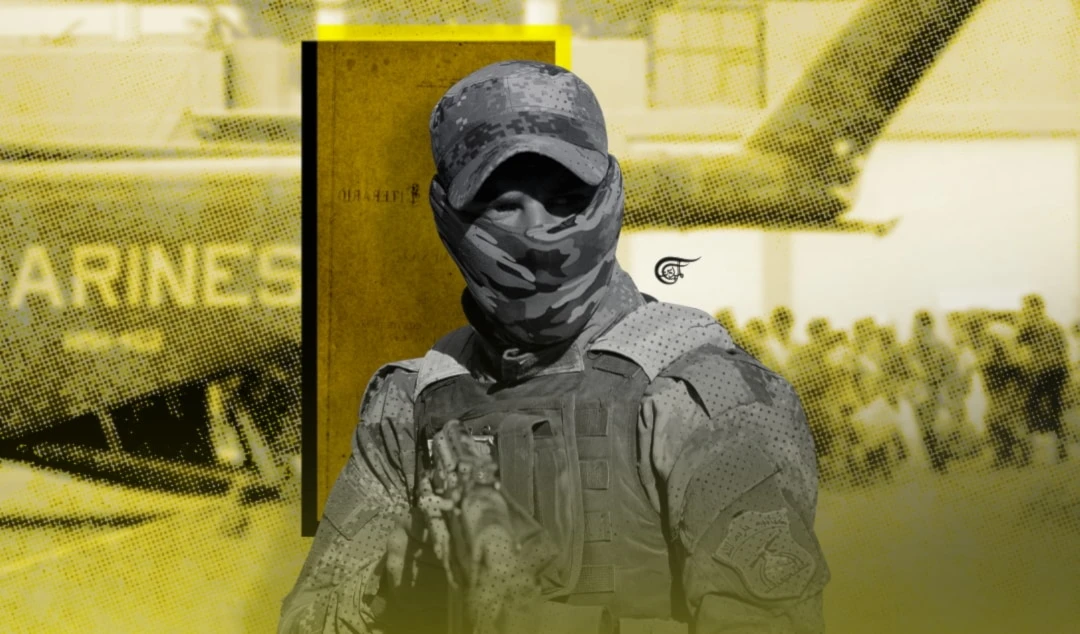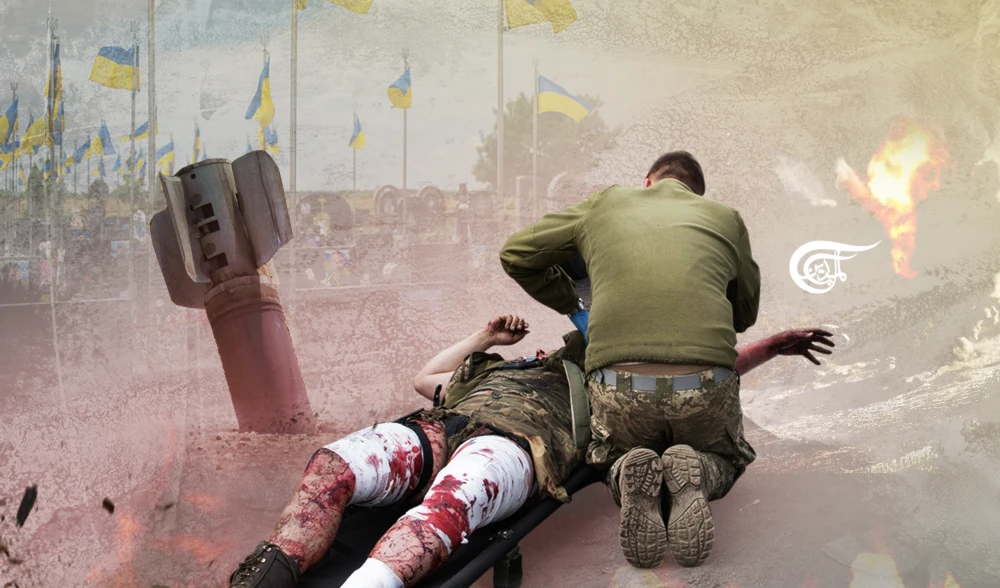A report card for Ukraine’s counteroffensive
With minor territorial gains, sensitive new fortifications, a demoralized army, and money, time and weapons running out, Kiev's counteroffensive receives a failing grade.
-

(Illustrated by Hady Dbouq)
Summer has nearly come to an end, and the long-awaited, media-hyped Ukrainian counteroffensive has more or less concluded. The counteroffensive that was so meticulously planned was set to take back large swaths of Russian-controlled territory. However, it appears that the Armed Forces of Ukraine have come up painfully short - and this has given the Russian military a significant advantage moving into the colder months.
Assisting the Ukrainians on this endeavor: scores of NATO hardware including tanks and armored personnel carriers, billions of dollars worth of weapons and ammunition (including highly controversial cluster bombs and depleted uranium shells), and on-the-ground logistical support from NATO advisors. Among the NATO tanks: American Bradleys, German Leopards, and Polish Krabs, which are top-of-the-line “game changers” as marketed by the West’s best military corporations.
Anyone plugged into Western mainstream media would be convinced that with the addition of these highly-sought killing machines, the Russian defensive lines would collapse. But one only needs to look at the first and last week of the counteroffensive and the total amount of kilometers gained as well as Ukrainians killed to see that something went terribly wrong for Kiev and its NATO backers.
Week one: the highly marketed, mythological might of the NATO tanks was shattered. Images populated the internet of burning NATO tanks, some abandoned and others even captured by Russian forces.
Week fourteen: More images and videos of burning NATO tanks, this time, and for the first time ever, a British Challenger 2 tank was found destroyed. But even more significant news from this week was off the battlefield: Ukraine’s Defense Minister Oleksii Reznikov was dismissed.
In terms of territory, the lines have changed favorably for Ukraine - but only by a few kilometers of “gray zone”. For the uninitiated, the gray zone is typically contested territory, which is often the “killzone” of the battlefield - where the heaviest losses occur. This is not to be confused with Russia’s heavily mined, fortified multiple lines of defense. The very first few lines of Russian defenses have barely been touched, if even meaningfully penetrated.
Among the land gained by Ukrainians are mostly lowlands, which are disadvantageous compared to the highlands controlled by Russians. In a coordinated Russian advance, these could be overtaken quickly, but we will explore later why Russians preferred to set the killzone here.
According to Ukrainian sources, some advances have been made by a meager 47 square kilometers. Western media reported that in some areas, Ukraine has made gains of only 7 kilometers. By their own admission, “It is a far cry from the sweeping territorial gains Western allies hoped for.”
However, an advance is an advance. We can concede that to the Armed Forces of Ukraine - for now. But weighing military goals may determine how one truly sees this outcome. Russia currently holds Ukraine’s most eastern sections, acceding them via a referendum and now holding them through a partially mobilized military. Ukraine’s primary objective is to take back lost territory and restore its borders (by its own definition of 1991 borders, which includes Crimea - under Russia's control since 2014).
Now, recall Russia’s primary military objectives: demilitarization and “denazification” of Ukraine. After all, the special military operation began when Ukraine offered to host long-range missiles on behalf of NATO, capable of striking Moscow. So, it is no surprise that the Russian military moved to destroy airfields within the first few weeks of the operation.
For Russia, demilitarization and “denazification” are going according to plan. As per Russian data, 66,000 Ukrainian soldiers have been killed since the start of Kiev's counteroffensive. Defense always has an advantage in most war scenarios (one can recall the fierce defense from Ukrainians in the first months of the operation), and the Russian military is taking full advantage of that, as Kiev seems to throw scores of Ukrainians into the killzone, which Russia has set.
Ukraine cannot deny that its losses are huge. The Kiev regime refuses to admit it outwardly, but it is conceding this in other ways. Western media have reported that Ukraine has moved to bury its dead in grounds where Ukrainians are already buried: it is running out of room for its dead. Ukrainian President Volodymyr Zelensky has also pushed to expand martial law and mobilization through the end of November. In a viral video, he can even be seen visibly angry, scolding some Ukrainians to “stop partying and go to the front lines.”
One is then led to contrast the military objectives of the two fighting countries. For Ukraine, the land must be retaken. For Russia, Ukraine must be demilitarized.
“Keep men, lose land; land can be taken again. Keep land, lose men; land and men both lost.” These words from Chinese leader Mao Zedong, who fought various wars from the Chinese Civil War to World War Two and more, must be remembered and reflected on.
Is this to say that the Armed Forces of Ukraine should just retreat all the way back to Kiev and Lvov? No, but with this preventable war, there was always the diplomatic table (that Russia is still open to), which was ignored by Kiev and further sabotaged by Washington and London.
What is meant is that Kiev is just simply outmaneuvered, outgunned, and outmanned. To cut through Russian defense lines to meet their minimum goals, Ukrainian forces would have to remove kilometers worth of mines while dodging Russian artillery, drones, and missile strikes with no air support. Then, they would have to go toe-to-toe with fresh arrivals of Russian troops who are not as drained physically as the thinned out Armed Forces of Ukraine.
In terms of air support, NATO countries, which seem to be interested in prolonging this war as long as possible, are barely supporting. Some countries have promised F-16s, but it would take months to train Ukrainians on how to fly them. Furthermore, there are little to no airfields left for Ukrainians to use fighter jets.
Even without air support, we must be critical of what the Ukrainians were promised and given. They were promised state-of-the-art NATO weapons capable of turning the tide of war. What they received were scrappy products with good marketing. Sadly (for the West’s military-industrial complex), NATO weaponry when put to the test is all flash and no substance.
Speaking of which, Ukraine’s failure should be shared with NATO. It wasn’t just NATO’s weapons - but its logistics and intelligence too. The alliance has walked a thin line between escalating all out war with Russia and remaining committed to Ukraine, but all this has ultimately led to NATO embarrassing itself as a so-called “defensive alliance”.
There were plenty of opportunities despite the profound obstacles for Ukraine to make a significant breakaway. However, Kiev failed to take advantage of these opportunities, mainly misreading or failing to act on Russian ammo replenishment. Perhaps the most significant fumble of the Armed Forces of Ukraine during their summer counteroffensive was not taking advantage of the Wagner mutiny. As Russian military personnel was rattled by the private military company's supposed uprising, this would have been the perfect chance for Kiev to make a significant breakthrough. However, this scenario was quickly closed, and the opportunity was forever gone.
Instead, Ukrainian officials have launched what seems to be adventurous drone strikes on different parts of Russia. The strikes have hit a variety of targets in different locations - from Crimea to Moscow, hitting air defense systems and even residential areas. These strikes are of no military significance and do nothing to change the battlefield - they are meant to inflict psychological terror on local populations and make the Russian command uneasy.
In short, the drone strikes mark desperation.
With minor territorial gains, sensitive new fortifications, a demoralized army, and money, time and weapons running out, this counteroffensive receives a failing grade.
Now, “winter is coming,” as they say. With a new Defense Minister and no promises of joining NATO, Ukrainian leadership is in for another bleak winter. The roads and land will freeze up. The temperature will drop. Instead of hibernating, the Russian bear will come out to fight.
How many more Ukrainian men must die before Zelensky turns his back on Washington’s orders in favor of diplomacy and saves what’s left of this Ukrainian generation?

 Shabbir Rizvi
Shabbir Rizvi
 8 Min Read
8 Min Read











